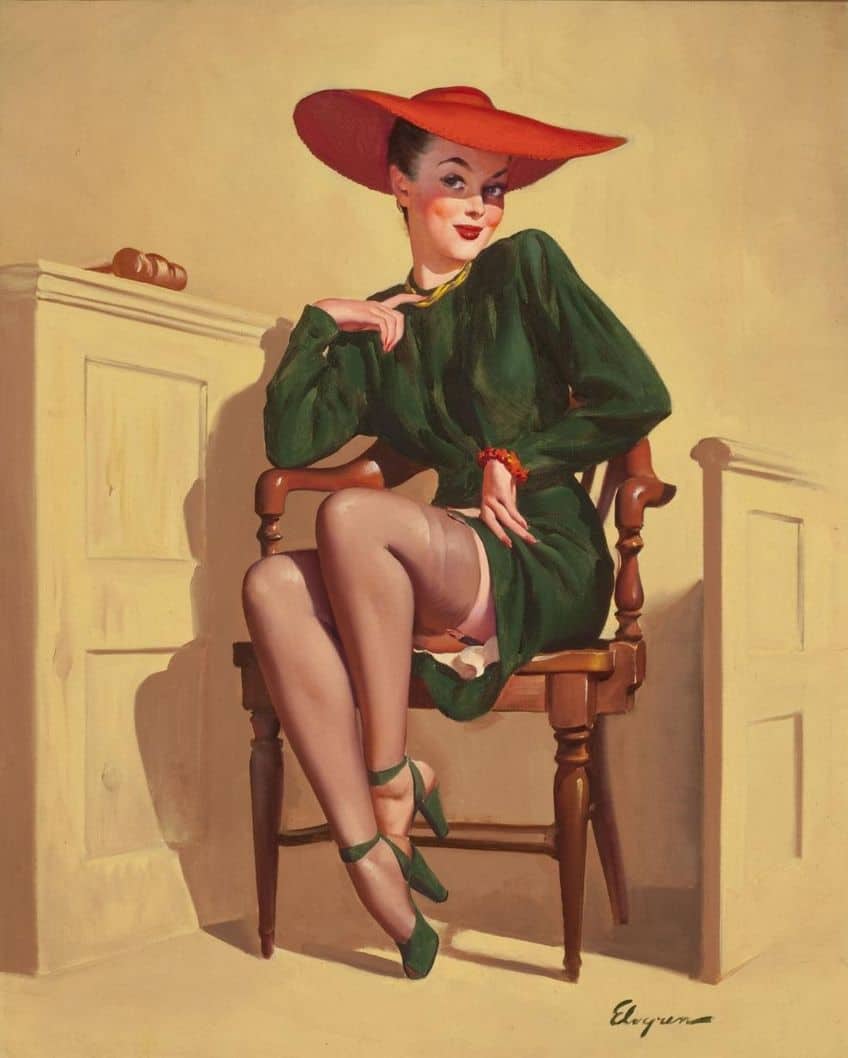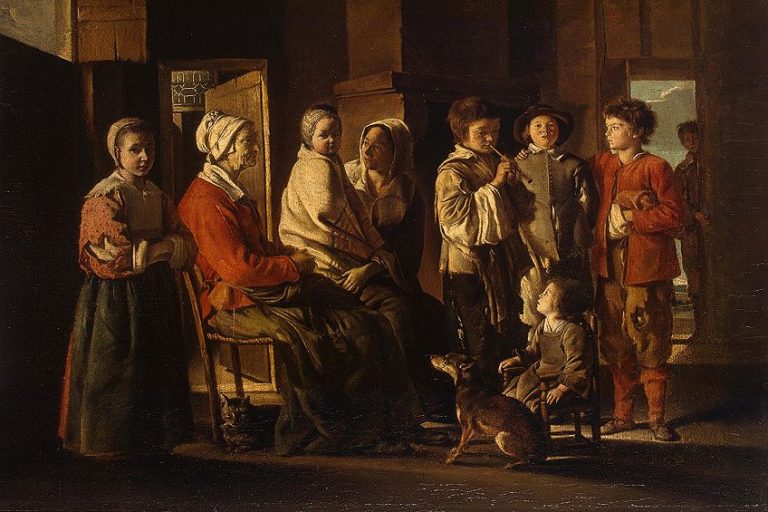Vintage Erotic Art – Tracing Cultural Attitudes Towards Sexuality
Vintage erotic art is a captivating genre that delves into the rich tapestry of human sensuality across centuries. From the delicate brushstrokes of Renaissance masters to the bold expressions of the Art Nouveau era, this genre encompasses a wide array of artistic styles and interpretations of eroticism. Exploring themes of desire, intimacy, and the human form, vintage erotic art offers a unique perspective on the cultural attitudes and taboos surrounding sexuality throughout history. In this article, we will delve into the intriguing world of vintage erotic art, uncovering its artistic merits, societal influences, and enduring allure.
Key Takeaways
- Vintage erotic art is a historical genre that provides insight into past cultural attitudes towards sexuality.
- The transformation of erotic art over the years reflects changing societal perceptions and classifications.
- The art form includes a wide variety of mediums and styles, illustrating diverse sexual expressions and fantasies.
Historical Development of Vintage Erotic Art
Vintage erotic art encompasses a broad array of imaginative illustrations, photography, and literature that dates back to the 18th century. The genre provides a window into the past’s cultural attitudes towards sexuality and eroticism, revealing a rich tapestry of aesthetics and sensibilities. Diverse in form, it includes mediums like secret French postcards, pop-up adult comics, and sexually suggestive photography that has evolved in its public perception over the decades.

This art form has undergone significant transformation, particularly noticeable through changes in its terminology and societal acceptance. The evolution of this art form has mirrored societal shifts and mores concerning the expression and acceptance of sexuality in visual culture. Post-1960s, what was once broadly referred to as erotica began to be subsumed under categories such as glamour photography. Despite the shift in nomenclature and the occasional moral scrutiny, the essence of vintage erotica remains a study of erotic expression, blending art with human sexuality and fantasy-filled illustrations.
Antiquity and Rituals
In ancient civilizations, erotic art was often intertwined with religious and cultural rituals. The Turin Erotic Papyrus from Egypt and sculptures from South America displayed explicit sexual images and were possibly used in fertility ceremonies. Artifacts from Pompeii illustrate that erotic artwork adorned private homes and public spaces, indicating that sexual representation was a visible part of everyday life.
The Kama Sutra of India not only depicted various sexual positions but also wove them into a philosophical text dedicated to love.
European Renaissance to the Belle Époque
Erotic art witnessed a flourish during the Renaissance, with artists such as Marcantonio Raimondi creating a series of engravings based on I Modi that celebrated various sexual acts. However, the conflict between open expression and censorship has always been intricate, as seen in the case of Raimondi being jailed for his art. By the Belle Époque in Paris, artists like Gustav Klimt and Aubrey Beardsley further developed the aesthetic of eroticism, integrating it with symbolism and Art Nouveau styles.

Gil Elvgren and Pin-Up Girls
Mid-20th century American artist Gil Elvgren revolutionized the genre of pin-up girls. Through his paintings, he depicted women in playful yet sexually suggestive poses, balancing innocence with erotic allure.
These images became popular during World War II, serving as a morale booster for soldiers.
Secret French Postcards and Sex Workers
In the late 19th to early 20th centuries, Paris became a hub for pornographic photography, often seen in the form of postcards discreetly sold under the counter. These “French postcards” depicted nude or semi-nude sex workers, capturing a more candid and sometimes voyeuristic view of the erotic.

Modern Development and Popularization
The sexual revolution of the 1960s and onwards played a pivotal role in the acceptance and popularization of erotic art. The work of publishers like Taschen helped bring vintage erotica into the mainstream collector’s market.
Cinematic representation has also contributed to this trend, normalizing the portrayal of sexuality and erotic art in contemporary culture.
Principal Themes and Motifs
Vintage erotic art often reflects the cultural and social attitudes of its time, presenting themes such as sexuality, political influence, and mythological storytelling through various mediums and styles.

Influence of War and Politics
The intersection of war and politics with erotic art is noticeable in both subtle and overt representations. War, often causing shifts in societal norms and values, influenced erotic art to include depictions of disease and the darker aspects of human behavior. Political themes were also evident, with erotic art sometimes used as a means of satire or social commentary.
This reflected the turbulence of the times in a manner that today would be considered pornographic.
Exploration of Sexuality and Reproduction
Erotic art has historically explored the theme of sexuality, with images often highlighting the act of intercourse, and showcasing genitalia such as the penis and vagina. Artists like Agostino Carracci in his work “Lascivie” or Franz von Bayros with his explicit portrayals have depicted various sexual acts including fellatio, cunnilingus, and heterosexual relations. The importance of reproduction was also a recurring theme, and depictions of masturbation highlighted the human fascination with the body and erotic pleasure.

Depictions of Mythological and Religious Narratives
Vintage erotic art frequently incorporated mythological and religious narratives, infusing works with complex symbolism. For example, Giulio Romano stirred controversy with “I Modi,” which illustrated sexual positions and was later condemned by the Catholic Church. Nicolas Poussin’s “Jupiter and Antiope” offered an erotic take on mythological scenes.
Images often featured biblical figures, three graces, nymphs, and even goat-like creatures, weaving together the erotic with the divine or mythical.
Artistic Techniques and Media
The classification of vintage erotic art spans a variety of techniques and media, each lending a unique texture and perspective to the portrayal of human sexuality. From delicate engravings to the tangible dimensions of sculpture and the emergent intimacies captured in photography, artists have navigated through numerous forms to express erotic themes.

From Gravure to Print
Engravings, often created through incising designs on metal plates, were a prevalent method for producing erotic imagery. The detail-oriented process allowed for fine lines and intricate patterns, making engravings highly sought after.
These engraved plates could then be used for printmaking, allowing for the reproduction of artworks for a wider audience.
- Shunga, a genre of Japanese erotic art, thrived on the woodblock printing technique. The name, translating to spring pictures, references the euphemism for sexual content.
- In the West, engravings and later lithographs circulated discreetly among those who could afford such private collections.
Sculpture and Ceramics
Sculptures and ceramics provided a three-dimensional medium to explore erotic forms. Across different cultures, the human body and sensual acts were rendered in various materials like marble, bronze, or clay.
- Archaeological finds from ancient sites like Pompeii reveal sculptures that range from the subtle to the overt in their erotic content.
- Names of prominent artists in this domain often remain anonymous, yet their contributions continue to be appreciated for their craftsmanship and cultural significance.

Erotic Photography
With the advent of photography, a new form of erotic art emerged. Early photographers seized the opportunity to capture the human form in a more immediate and candid manner than ever before.
- Vintage erotica in photography often featured posed subjects, aiming to create artistic compositions that aligned with, and sometimes challenged, contemporary moral standards.
- Unlike the longevity of sculptures or the reproducibility of prints, vintage photographic images had a sense of temporal intimacy and fragility, adding to their allure and sense of nostalgia.
In conclusion, vintage erotic art serves as a captivating window into the complex and ever-evolving nature of human sexuality. Through the lenses of various artistic movements and periods, this genre not only celebrates the beauty of the human form but also challenges societal norms and perceptions surrounding eroticism. As we continue to appreciate and study vintage erotic art, we gain a deeper understanding of how artists throughout history have expressed and interpreted the intricacies of desire, intimacy, and sensuality, leaving behind a legacy that continues to intrigue and inspire us today.
Frequently Asked Questions
What Are the Defining Characteristics of Vintage Erotic Art?
Vintage erotic art is recognized for its exploration of human sexuality and desire, often conveyed through various mediums like painting and sketching. Subtlety, euphemism, and a focus on sensuality rather than explicitness tend to be prevalent in these works, reflecting the mores and artistic freedoms of their time.
Which Artists Are Renowned for Their Contributions to Vintage Erotic Art?
Artists such as Gustave Courbet, Édouard Manet, and Jean-Honoré Fragonard have been celebrated for their role in developing vintage erotic art. They pushed boundaries amidst the societal constraints of their era, creating artworks that challenged traditional norms and presented human intimacy in innovative ways.
How Has the Perception of Erotic Art Changed from the Vintage Period to Today?
Societal perceptions of erotic art have evolved significantly since the vintage period. Once considered taboo, these works are now more openly discussed and appreciated for their historical and cultural significance. Contemporary audiences tend to view vintage erotic art through a lens that considers both the period’s restrictive attitudes towards sexuality and the modern framework of artistic expression.
Isabella studied at the University of Cape Town in South Africa and graduated with a Bachelor of Arts majoring in English Literature & Language and Psychology. Throughout her undergraduate years, she took Art History as an additional subject and absolutely loved it. Building on from her art history knowledge that began in high school, art has always been a particular area of fascination for her. From learning about artworks previously unknown to her, or sharpening her existing understanding of specific works, the ability to continue learning within this interesting sphere excites her greatly.
Her focal points of interest in art history encompass profiling specific artists and art movements, as it is these areas where she is able to really dig deep into the rich narrative of the art world. Additionally, she particularly enjoys exploring the different artistic styles of the 20th century, as well as the important impact that female artists have had on the development of art history.
Learn more about Isabella Meyer and the Art in Context Team.
Cite this Article
Isabella, Meyer, “Vintage Erotic Art – Tracing Cultural Attitudes Towards Sexuality.” Art in Context. March 20, 2024. URL: https://artincontext.org/vintage-erotic-art/
Meyer, I. (2024, 20 March). Vintage Erotic Art – Tracing Cultural Attitudes Towards Sexuality. Art in Context. https://artincontext.org/vintage-erotic-art/
Meyer, Isabella. “Vintage Erotic Art – Tracing Cultural Attitudes Towards Sexuality.” Art in Context, March 20, 2024. https://artincontext.org/vintage-erotic-art/.












Well done, Isabella. Thank you for your discerning eye!
S
Very informative post, well done Art in Context team!